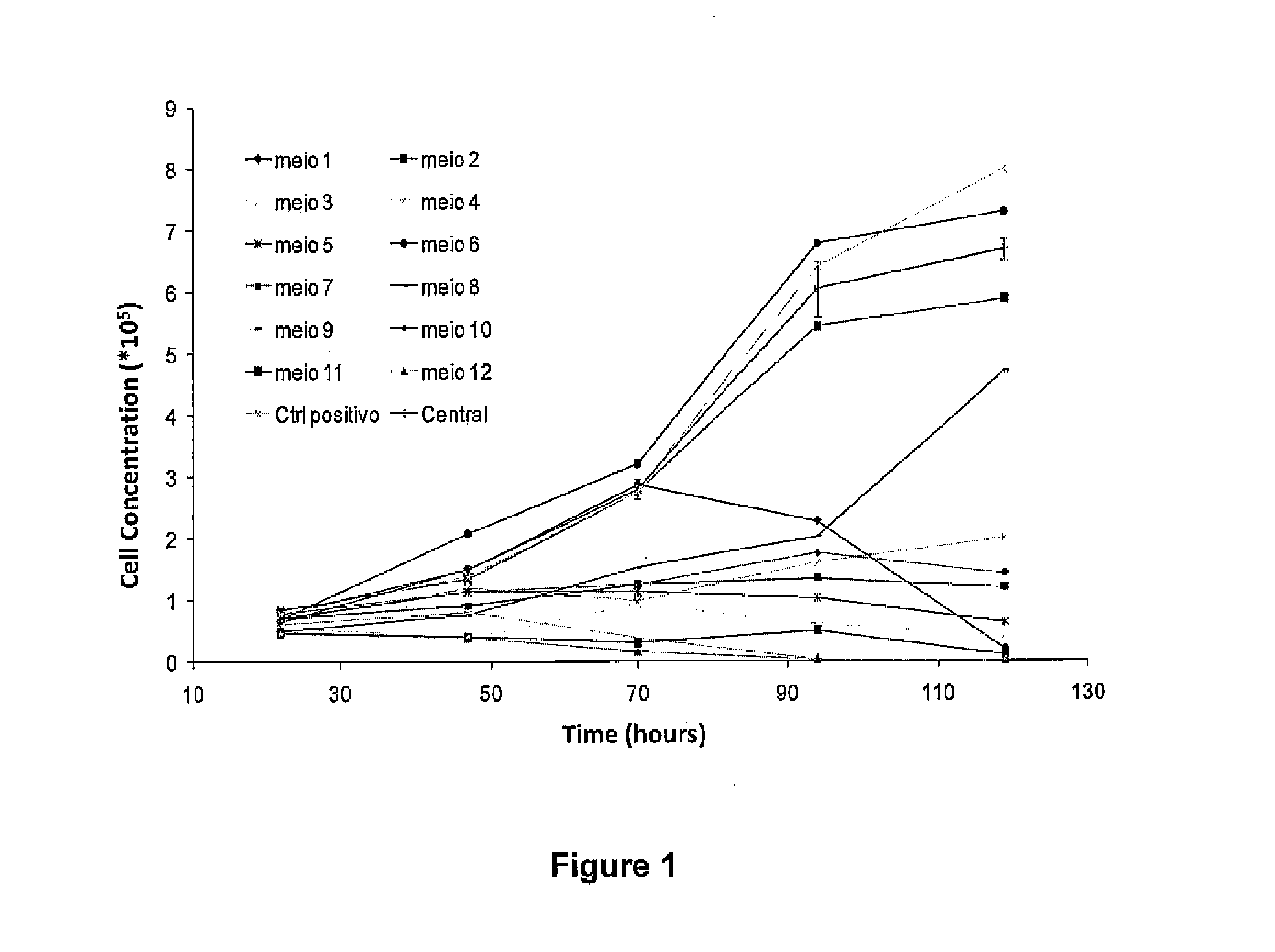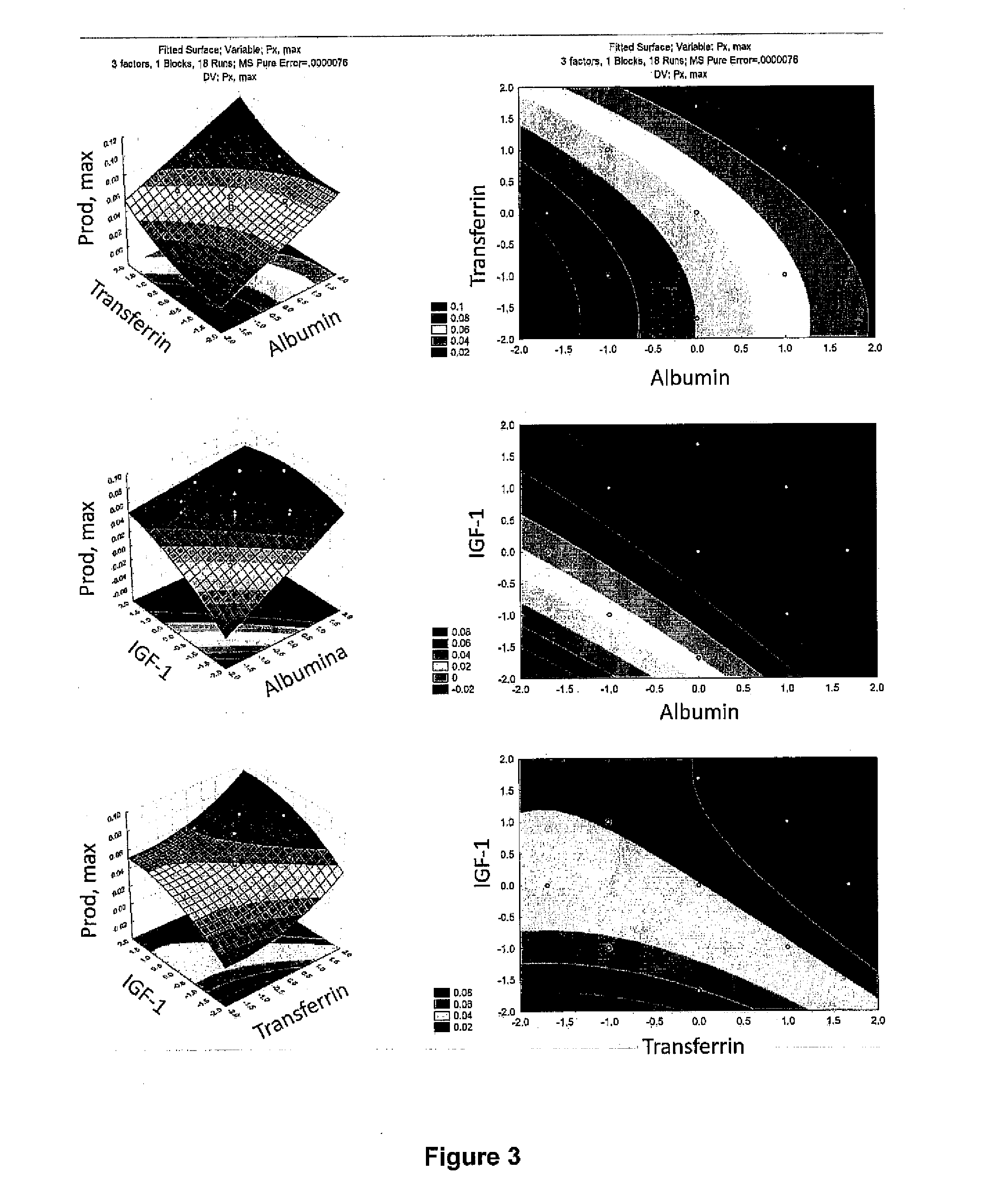Stem cell defined media for xeno-free and feeder free conditions and uses thereof
a technology of which is applied in the field of stem cell defined media for xeno-free and feeder-free conditions, can solve the problems of limited clinical use of stem cells in clinical therapy, difficult translation to cell therapy, and lack of knowledge and understanding of key factors released by stem cells, etc., to achieve more cost attractive, cost effective, and evoke undesirable immune responses
- Summary
- Abstract
- Description
- Claims
- Application Information
AI Technical Summary
Benefits of technology
Problems solved by technology
Method used
Image
Examples
example 1
[0081]To develop a media with no animal product in its formulation, the first series of experiments were designed to replace fetal bovine serum (FBS) and Knockout Serum Replacement (KSR) (Invitrogen) with a chemically defined and xeno-free serum substitute, while still using a feeder layer.
[0082]Supplements were added to a chemically defined medium Dulbecco's Modification of Eagle's Medium (DMEM) / Ham's F-12 50 / 50 Mix (DMEM / F12; Mediatech, Manassas, Va.; catalog number 10-092) that does not contain FBS or has a diminished amount of it. As mentioned, since KSR does not have an available formulation, the criteria for the selection of the supplements that would replace it was the same used for the substitution of FBS.
[0083]Initially, eight different supplements were chosen: CellPrime rAlbumin AF-S-recombinant human albumin (Millipore, Billerica, Mass.; catalog number 9501), CellPrime™ rTransferrin AF-recombinant human transferrin (Millipore, Billerica, Mass.; catalog number 9701), non-e...
PUM
 Login to View More
Login to View More Abstract
Description
Claims
Application Information
 Login to View More
Login to View More - R&D
- Intellectual Property
- Life Sciences
- Materials
- Tech Scout
- Unparalleled Data Quality
- Higher Quality Content
- 60% Fewer Hallucinations
Browse by: Latest US Patents, China's latest patents, Technical Efficacy Thesaurus, Application Domain, Technology Topic, Popular Technical Reports.
© 2025 PatSnap. All rights reserved.Legal|Privacy policy|Modern Slavery Act Transparency Statement|Sitemap|About US| Contact US: help@patsnap.com



